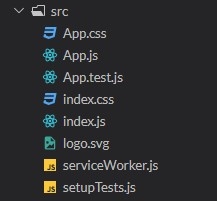React
I have been a religious fanboy of Angular Cinematic universe for long. This weekend I decided to go through the react and to understand why so much fuss is created around React. This blogs will be an introduction to React Framework.
React was developed by Facebook as a frontend library. Unlike Angular, it is not a framework. Frameworks offers a very opinionated way of coding(And we hate opinions 😉 ).
To use react, all we need is to import react and react DOM library.
<!--React Import-->
<script src="https://unpkg.com/react@16/umd/react.development.js" crossorigin></script>
<script src="https://unpkg.com/react-dom@16/umd/react-dom.development.js" crossorigin></script>
<!--JSX Import-->
<script src="https://unpkg.com/babel-standalone@6/babel.min.js"></script>
To Run our code, all we need to use in React.render(JSX_ELEMENT,selector). This will grab the selector and put our element there.
To Generate Boilerplate code we have create-react-app It uses webpack to bundle content

npx create-react-app my-app
cd my-app
npm start
#This will Create a bundled App.js, App.css, App.test.js and the source file is contained in idex.css and index.js
JSX
JSX allows use to use an HTML element, right in the JavaScript code. Also, it allows us to use expression
When the JSX expressions are compiled, they are converted into JavaScript objects, representing React elements. React then uses these elements to build the corresponding HTML DOM and display it in the browser. React only update the element which requires updation. The way it is done is that react creates what is called virtual dom and manipulating virtual DOM is easy. It then goes ahead to calculate the diff of Virtual DOM and then rerenders only the part of DOM which has changed.
Component
Components are reusable part of DOM. There are two ways to create component. Functional Component and Class Component
//Functional Component return JSX Element. It can take props(Constant Value)
function Hello(props) {
return <h1>Hello {props.name}.</h1>;
}
const el = <Hello name="Akanksha"/>;
const selector = document.getElementById('root')
ReactDOM.render(el, selector);
//Class component must extends React.Component and implement render method
class Hello extends React.Component {
render() {
return <h1>Hello {this.props.name}.</h1>;
}
}
If component needs constant values, props is the best choice. Otherwise state needs to be implemented.
//State should not be modified directly. Instead, React provides a setState() method, that can be used to modify the state.
class Hello extends React.Component {
state = {
name: "Akanksha",
age: 20
}
doSomthing = function(){
this.setState({
name: "Akanksha Updated",
age: 25
});
}
render() {
return <h1>Hello {this.state.name}.</h1>;
}
}
If functional component needs state, then we need to use useState hooks
import React, { useState } from 'react';
function Hello() {
const [name, setName] = useState("Akanksha");
return <h1>Hello {name}.</h1>;
}
LifeCycle Method
These methods are called when component is mounted, when it is updated and when it is unmounted
| Class Component | Functional Component |
|---|---|
| componentDidMount | React provides a special Hook called useEffect to make lifecycle methods available in functional components |
| componentDidUpdate | |
| componentWillUnmount |